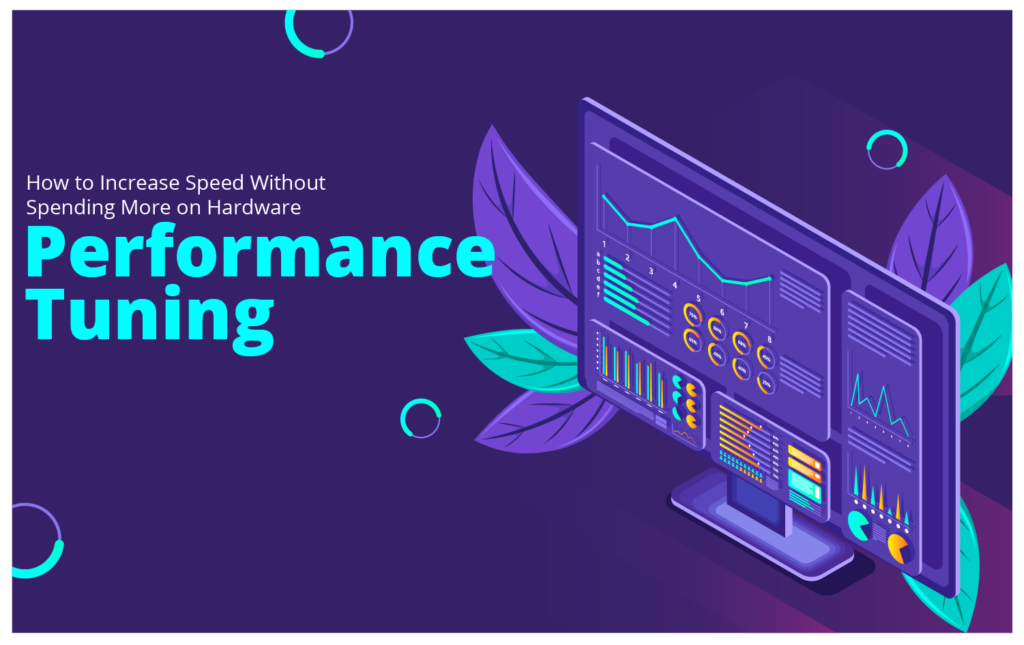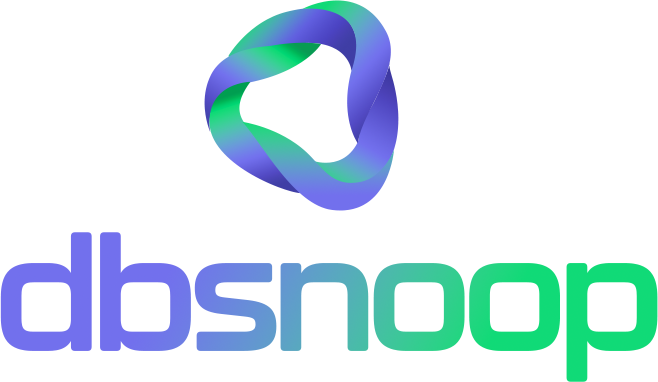

The application is slow. Transactions take a long time, reports freeze, and the user experience degrades. The first solution that comes to the minds of most management teams is invariably the simplest and most expensive: “Let’s add more hardware.” Increasing the CPU, allocating more memory, or provisioning a disk with more IOPS seems like the fastest way to solve the problem.
However, this approach is, more often than not, a costly palliative that masks the real disease rather than curing it. It’s the equivalent of buying a bigger engine for a car that has its brakes on.
The true path to scalable and financially sustainable performance is not in adding more resources, but in optimizing how the software uses the existing resources. This is the domain of database Performance Tuning: a technical discipline focused on identifying and eliminating inefficiencies in the SQL code, data structure, and environment configuration.
This article details what performance tuning is, why the manual approach is inefficient in complex environments, and how dbsnOOp’s predictive observability platform makes it a fast, data-driven process with a measurable ROI.
The Myth of Hardware as a Solution and the Cost of Masked Inefficiency
Throwing hardware at a performance problem is a short-term strategy with long-term negative consequences.
Hardware as an Expensive Anesthetic
Adding more CPU or IOPS can indeed alleviate the pain momentarily. An inefficient query that used to take 5 seconds might now take 2. The immediate problem seems solved. However, the fundamental inefficiency, the root cause of the slowness, has not been corrected. The code continues to execute millions of unnecessary logical operations, but now on more powerful and more expensive hardware. The company starts paying a continuous premium on its cloud bill to subsidize poorly optimized software.
Limits of Vertical Scalability
The “scaling up” strategy has physical and financial limits. There comes a point where there is no larger server instance to buy, or the cost becomes prohibitive. More importantly, certain types of bottlenecks, like lock contention (where multiple processes compete for the same data resource), are not solved with more hardware. In fact, more CPUs can even worsen the contention. The only way to scale sustainably is through software optimization.
What is Database Performance Tuning? A Multi-Layered Approach
Performance tuning is not a single action, but a discipline that spans multiple layers of the data ecosystem.
1. Code Optimization (SQL Tuning)
This is the area of greatest impact. It is estimated that over 80% of all performance problems in databases are caused by inefficient SQL code. SQL Tuning involves analyzing and rewriting queries to ensure they access data as efficiently as possible, minimizing resource consumption. The goal is to reduce logical reads (accesses to data blocks in memory) and physical reads (accesses to disk).
2. Data Structure Optimization (Index Tuning)
Indexes are data structures that allow the database to find information quickly, without having to read entire tables. Index Tuning is the process of:
- Creating missing indexes: To support the queries executed by the application.
- Removing redundant or unused indexes: Indexes are not free. They consume disk space and add overhead to write operations (INSERT, UPDATE, DELETE). Removing unnecessary indexes can speed up these operations.
- Modifying existing indexes: To better suit the access patterns of the queries.
3. Configuration Optimization (Configuration Tuning)
This layer involves the fine-tuning of the database instance’s configuration parameters to optimize the use of memory (buffer cache, work areas), parallelism, and the behavior of the query optimizer. Although important, configuration optimization generally has a smaller impact than SQL and index optimization and should only be done after a thorough analysis of the workload.

The Central Challenge of Manual Tuning: Where to Start?
The theory of performance tuning is well understood. The practical difficulty, in a complex production environment, is not knowing how to optimize a query, but rather knowing which of the tens of thousands of queries that run every hour should be optimized.
The “Ocean of Data” Syndrome
A DBA or SRE, using the database’s native tools (like EXPLAIN plans, AWR reports in Oracle, or pg_stat_statements in PostgreSQL), is faced with an ocean of information. Identifying the “Pareto queries”—the small percentage of queries that cause the most impact—is a manual, time-consuming, and extremely complex detective work.
The Difficulty of Correlating Symptom and Cause
A user complaint (“the checkout is slow”) rarely translates directly to a single query. The slowness may be the cumulative result of dozens of small, inefficient queries or a blocking effect (locking) caused by a completely different process. Correlating the business impact with the technical root cause is the biggest challenge of manual tuning.
The dbsnOOp Accelerated Performance Tuning Methodology
The dbsnOOp platform was designed to solve the central challenge of tuning: transforming the process from reactive and manual to proactive and automated. It uses the AI of the Autonomous DBA to guide the IT team through a continuous optimization cycle.
Phase 1: Opportunity Identification with Workload Analysis
Instead of manually searching for problematic queries, dbsnOOp analyzes 100% of the workload in real time and presents a prioritized list of optimization opportunities.
- Mechanism: The platform continuously collects performance data from all executed queries. It automatically ranks them by resource consumption (CPU, I/O, elapsed time, executions).
- Functionality: dbsnOOp’s “Top N Queries” reports eliminate the guesswork. In minutes, the team can see exactly which 10 or 20 queries are responsible for the majority of the load on the system. The “ocean of data” is transformed into a clear target.
Phase 2: Root Cause Diagnosis with Execution Plan Analysis
Once the target query is identified, dbsnOOp provides a deep diagnosis of its inefficiency.
- Mechanism: The platform’s AI analyzes the query’s execution plan—the map that the database optimizer chose to access the data. It compares the plan with the object statistics (table sizes, data distribution) to find discrepancies and costly operations.
- Functionality: dbsnOOp translates the complex execution plan into an understandable analysis. It visually highlights problematic operations, such as:
- Full Table Scans: Shows that the query is reading a table of millions of rows when it should be using an index.
- Inefficient JOINs: Identifies when a Nested Loop is being used on large tables or when a Hash Join is exhausting the memory.
- Wrong Cardinality Estimates: Reveals when the database statistics are outdated, leading the optimizer to make bad decisions.
Phase 3: AI-Guided Optimization (AI-Powered Tuning)
This is the functionality that most accelerates the process. dbsnOOp doesn’t just point out the problem; it recommends the solution.
- Mechanism: Based on the analysis of the execution plan and the table structure, the AI generates specific optimization recommendations.
- Functionality: dbsnOOp’s AI-Powered Tuning offers actionable suggestions:
- “Create this composite index on columns (A, B) of table X to support the WHERE clause of this query.”
- “The statistics for table Y are 50% stale. Run a statistics update job.”
- “Consider rewriting this subquery as a Common Table Expression (CTE) to improve performance.”
This reduces optimization time from days of analysis to hours of implementation.
Phase 4: Validation and Continuous Monitoring
Performance tuning is not a project with a beginning, middle, and end. It is a continuous cycle.
- Mechanism: After applying an optimization, dbsnOOp continues to monitor the performance of the query and the system as a whole.
- Functionality: The platform allows you to validate the impact of the change by comparing the query’s cost before and after the optimization. More importantly, it continues its predictive surveillance, detecting new degradations as the data and code evolve, ensuring that the database’s health is maintained in the long term.
The Business Impact: Performance, Costs, and Innovation
Adopting an AI-assisted performance tuning approach has a triple and measurable impact on the business.
Improved Performance and Customer Experience: The most direct result is a faster and more responsive system. For an e-commerce site, this means higher conversion rates. For a SaaS, it means greater customer satisfaction and retention. For internal systems, it means higher employee productivity.
Direct Cost Reduction (CapEx and OpEx): Performance tuning is the most effective form of cost optimization. It allows you to postpone or completely cancel expensive hardware upgrades (CapEx savings). In cloud environments, it results in lower resource consumption, which leads to a direct and sustainable reduction in the monthly bill (OpEx savings).
Acceleration of Innovation: By solving performance problems quickly and efficiently, dbsnOOp frees the engineering team from the vicious cycle of “firefighting.” The time that would be spent on manual investigations can now be invested in developing new features, improving the architecture, and delivering more value to the business.
In conclusion, before you sign the check for more hardware, invest in the intelligence to optimize what you already have. Performance tuning is not a cost; it is the investment with the highest and fastest ROI that an IT organization can make.
Want to solve this challenge intelligently? Schedule a meeting with our specialist or watch a live demo!
Schedule a demo here.
Learn more about dbsnOOp!
Learn about database monitoring with advanced tools here.
Visit our YouTube channel to learn about the platform and watch tutorials.

Recommended Reading
- What is query degradation and why does it happen?: Performance tuning begins with identifying what is wrong. This article provides the theoretical basis, explaining in technical detail why queries, the main target of tuning, degrade over time. It is essential reading to understand the nature of the problem that dbsnOOp solves.
- When are indexes a problem?: Index optimization is a crucial part of performance tuning, but it’s a double-edged sword. This post delves into how a poorly planned index can harm performance instead of helping, contextualizing the precision of dbsnOOp’s tuning recommendations.
- 24/7 monitoring of databases, applications, and servers: Effective tuning requires a complete view of the environment. This article expands the argument for the need for holistic monitoring, reinforcing how dbsnOOp’s Top-Down approach is vital to ensure that the tuning effort is focused on the real root cause of the problem, not just an isolated symptom.

